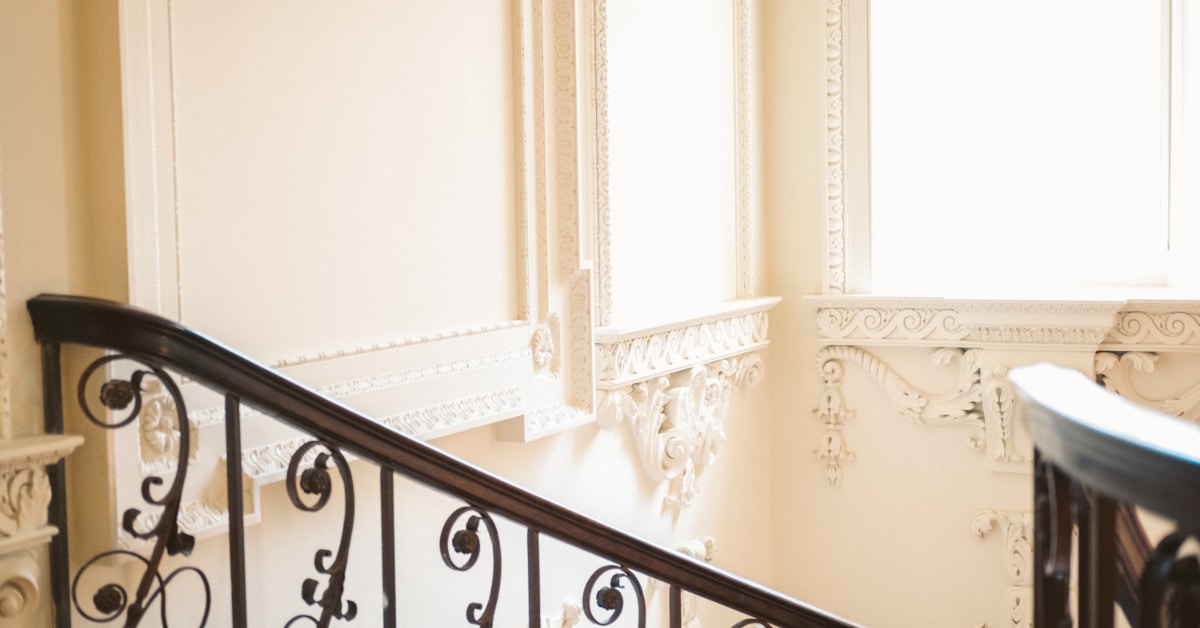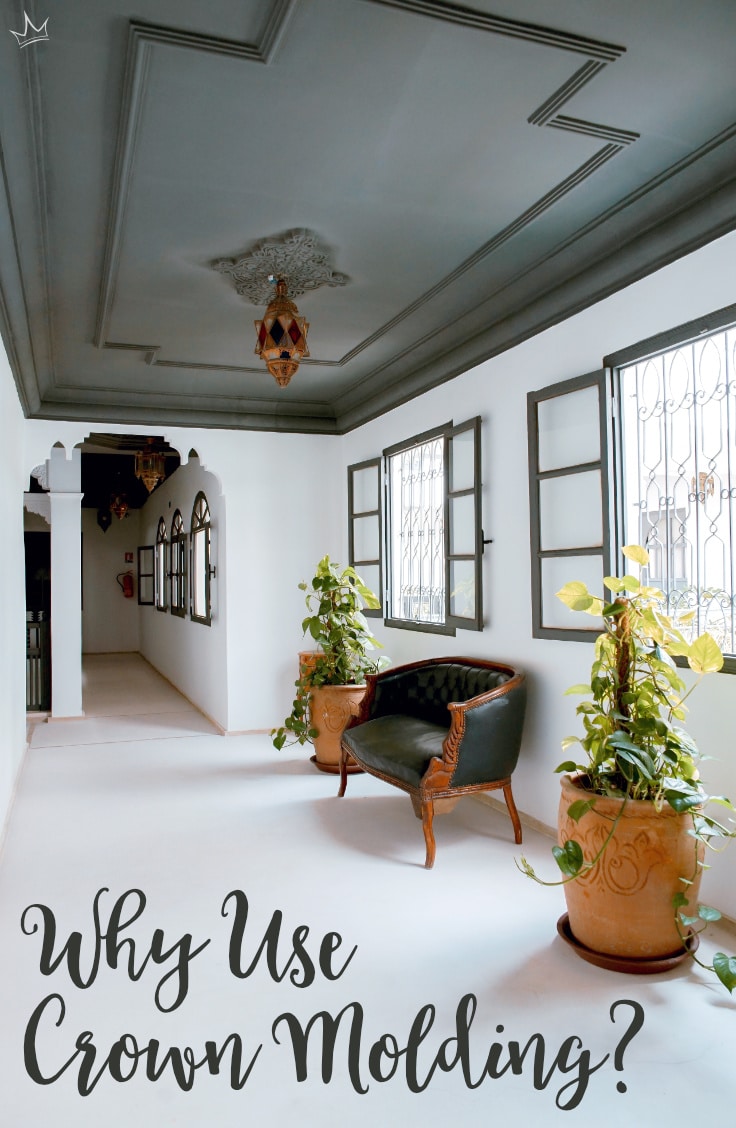
Crown molding is everywhere. If you start looking for it, you will find it! Office buildings, universities, and government structures make use of the ancient adornment. Ever wonder why museums, music halls, and mansions have a feel of craftsmanship?
Crown molding is the answer. From ornate to simple and elegant, the genius of crown molding is making a room feel complete. If you’ve been looking for that wow factor in your home, crown molding might just be what you’ve been looking for.
What is Crown Molding, Anyway?
The use of crown molding as an enhancement to buildings and homes, goes back generations. The ancient Egyptians first made use of crown molding. The Greeks and Romans incorporated crown molding into their architecture. Remember those columns you came across in history class? Greeks and Romans carved moldings out of stone to decorate temples, government buildings, and more.
Originally, it served as a practical solution to hide building imperfections between the wall and ceiling. It was also used to divide room sections. The Greek and Roman knack for combining art and function gave birth to crown molding becoming a decorative element.
Generations ago painting molding on walls was a common practice. Then the Greeks realized actual carvings created shadows and light on a wall much better than paint. Greeks and Romans used stone and marble carvings to create their crown moldings. Creating molding from stone, marble and wood was an intensive, costly process. A home or building with crown molding signified wealth and taste.
These days the use of molding isn’t limited to the wealthy, but the added finesse of crown molding still offers a luxurious finish. The architectural detail of crown molding is a staple of modern construction. No longer made out of stone, today crown molding is available in a range of materials including wood, plaster, mdf, polyurethane, pvc, and polystyrene foam.
The option of materials, installation methods, and affordability have changed the game. Adding a touch of personality to a room is now attainable for everyone. And who doesn’t want their home to have a little custom flair?

Why Use Crown Molding?
Crown molding has come a long way. Not only is it functional, but molding can transform a room providing a finished look. Wondering what to choose? It’s nearly impossible to make a poor choice when it comes to crown molding. Simply match a room size to molding as the first step. The size of the room and height of the walls can help you determine what molding looks best.
Large room? Perfect for an ornate, large style. Small room? Simple and small might be better. Even with those general guidelines, there is no one single way to use crown molding. Experiment or go traditional, allowing your creativity to lead the way.
Matching the size and style of baseboards is another factor. Create a pleasing aesthetic by selecting molding and baseboards that compliment each other. Personal style is up to you, from modern to traditional, let molding define your space.

Molding Installation: Go Pro or DIY?
Unless you are a carpenter, installing wood crown molding is not an easy job. Combining joints is an art in itself. Unless you have years of experience with a mitre and coping saw, installing wood crown molding (the traditional material) is a daunting task. Wood crown molding can be difficult to handle, not to mention heavy. You’ll need an extra hand for lifting the molding into position.
Without experience or the proper tools, mistakes are bound to occur. Mistakes are expensive, so hiring a contractor for wood molding is almost a necessity. Hiring a professional installer runs from $5 to $12 a linear foot. Prices depend on the type of molding selected, the space covered, and the difficulty of installation.
Instead of handing over money to a contractor, you might consider foam crown molding as an affordable option. Foam crown molding offers the same great look as wood and plaster. Foam molding is cheaper, lightweight, and easy to install.
How much will you save? Foam molding material is 50% to 300% cheaper than wood! It is a breeze to cut, and you can honestly complete your entire installation on your own. Simply apply caulk and affix it to the wall. No nails, no power tools, no carpentry expertise required. In addition, foam crown molding is even a bit more sturdy than wood.
Live in a humid area? While wood may warp over time, foam can withstand extreme changes (even in a bathroom environment!)
You can save even more by painting foam crown molding yourself. Some styles require a primer or paint combined with primer. Hiring a painter could add another $1-$3 per linear foot. Painted foam molding looks just like wood without the heft and challenge of installation. It doesn’t get any easier than that!
What Are You Waiting For?
If you’ve always wanted that “custom builder” appeal for your living space, above kitchen cabinets, on your fireplace mantel, there’s no better time to try your hand at foam crown molding. A small investment, both money and time, for big style!
If you’re wondering if you can install foam crown molding — with no other experience — the answer is absolutely. You don’t have to take our word for it…check out the step-by-step processes detailed on this blogger’s site and on our How To Page.
And, with a crew like us standing by to help you answer your questions, you don’t have any reason to be nervous. Even if you’re not a pro at home DIY, you can install foam crown molding. Let us know how we can help you — from choosing a style to planning out how much you’ll need, we’ve got you covered.
Shop this look for a formal dining room, or this classic crown molding style.













